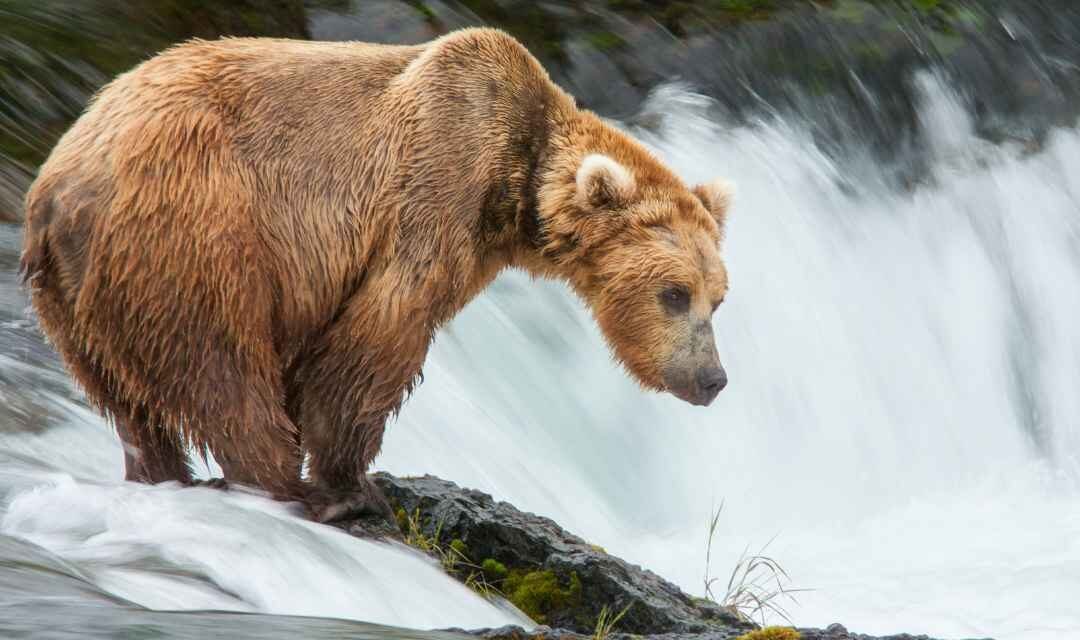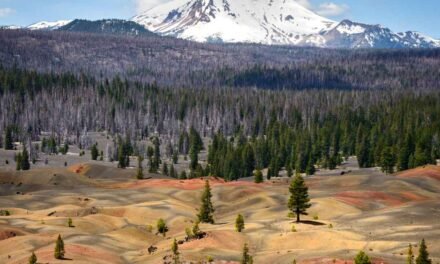Welcome to this comprehensive visitor’s guide to Katmai National Park, a spectacular and remote wilderness area in southern Alaska. Famous for its large population of brown bears, breathtaking landscapes, and volcanic features, Katmai offers an unparalleled opportunity to explore the rugged beauty and diverse wildlife of the Alaskan wilderness.
Katmai National Park Overview
Katmai National Park and Preserve spans over four million acres and is home to an impressive array of landscapes, including forests, lakes, tundra, and volcanic features. The park is best known for its thriving population of brown bears, with more than 2,000 bears calling the park home. Visitors also come to the park to witness the remnants of the 1912 Novarupta volcanic eruption, one of the largest volcanic eruptions of the 20th century.
Katmai National Park Location
Katmai National Park is located on the Alaska Peninsula, approximately 290 miles southwest of Anchorage. The park is remote and inaccessible by road, so visitors must travel by air or sea to reach it. The most common method of reaching Katmai is by taking a commercial flight to King Salmon, followed by a small plane or boat to the park.
Katmai National Park Things to Do
Brown Bear Viewing
One of the main attractions of Katmai is the opportunity to observe brown bears in their natural habitat. Prime bear viewing spots include:
Hiking and Backpacking
Katmai offers a range of hiking and backpacking opportunities, from short day hikes to multi-day wilderness excursions. Some popular trails and routes include:
Fishing
Katmai is a popular destination for anglers, offering world-class fishing opportunities in its numerous rivers, lakes, and streams. The park is particularly renowned for its salmon runs, but visitors can also fish for trout, Arctic char, and grayling. Fishing is subject to specific regulations, so be sure to consult the park’s guidelines before casting your line.
Wildlife Watching
In addition to brown bears, Katmai is home to a variety of wildlife species, including moose, caribou, wolves, and foxes. Birdwatchers can spot a diverse array of bird species, such as bald eagles, puffins, and various waterfowl. Key wildlife watching areas include:
Katmai National Park Itineraries
3-Day Itinerary
A 3-day trip to Katmai National Park allows you to explore some of the park’s highlights and participate in various outdoor activities. Consider the following itinerary:
Day 1:
Day 2:
Day 3:
7-Day Itinerary
A 7-day trip to Katmai allows for a more immersive experience, providing the opportunity to explore the park’s diverse landscapes and embark on multi-day wilderness excursions. Consider the following itinerary:
Days 1-2:
Days 3-5:
Days 6-7:
Best Season to Visit Katmai National Park
The best time to visit Katmai National Park is during the summer months, from June to September, when the weather is generally mild and the park is fully accessible. Bear viewing is at its peak during the salmon runs, which typically occur from late June to mid-July and from mid-September to early October. Fishing opportunities are also abundant during the summer months, while birdwatching is best in late spring and early summer.
Katmai National Park Weather
Katmai experiences a cool, maritime climate with mild summers and cold, wet winters. Summer temperatures range from 40°F to 60°F, with frequent rain and occasional fog. Fall brings cooler temperatures and increased chances of snow, while winter months can see temperatures dip below freezing, accompanied by heavy snowfall and strong winds. Spring is generally cool and wet, with temperatures gradually rising as the season progresses.
Katmai National Park Hotels and Camping
Hotels
There are no hotels within Katmai National Park, but visitors can find lodging options in the nearby communities of King Salmon and Naknek. Accommodations in these areas range from bed and breakfasts to lodges and hotels.
Camping
There is one campground in Katmai National Park, the Brooks Camp Campground, which offers tent sites, food storage lockers, and restroom facilities. Camping is allowed only in designated areas, and permits are required for overnight stays. For those venturing into the back country, there are no designated campgrounds, but camping is allowed as long as you follow Leave No Trace principles and adhere to park regulations. Be sure to carry a bear-resistant food container when camping in the backcountry.
Katmai National Park Restaurants
Dining options within Katmai National Park are limited. Brooks Camp offers a small dining hall that serves breakfast, lunch, and dinner, as well as a small store that sells snacks and basic groceries. Visitors are encouraged to bring their own food and cooking supplies, particularly when venturing into the backcountry.
Katmai National Park Wildlife and Plants
The park boasts a diverse array of wildlife, including its famous brown bears, moose, caribou, wolves, and foxes. Marine mammals, such as sea otters, harbor seals, and whales, can be spotted along the coast. Katmai is also home to numerous bird species, including bald eagles, puffins, and a variety of waterfowl.
The park’s vegetation is equally diverse, with dense spruce forests, tundra, and alpine meadows covering its vast landscapes. Wildflowers bloom throughout the summer, and the fall season brings vibrant displays of colorful foliage.
Katmai National Park History
Katmai has a rich cultural history, with evidence of human presence dating back more than 9,000 years. Indigenous peoples, including the Alutiiq, Yup’ik, and Dena’ina, have inhabited the region for centuries, relying on the abundant resources for fishing, hunting, and gathering. The 1912 Novarupta eruption dramatically altered the landscape and drew attention to the area, eventually leading to its designation as a national monument in 1918 and a national park and preserve in 1980.
Katmai National Park Geology
The geology of Katmai National Park is characterized by a combination of volcanic and glacial activity. The park is part of the Aleutian Range, a volcanic arc that stretches across the Alaska Peninsula. The 1912 Novarupta eruption formed the park’s most famous geological feature, the Valley of Ten Thousand Smokes, which is a vast landscape of ash and pumice deposits. Glacial activity has also played a significant role in shaping the park’s terrain, carving out valleys, fjords, and lakes.
Conclusion
Katmai National Park offers a unique and unforgettable experience for nature lovers and adventure seekers alike. Its remote location, pristine wilderness, and diverse range of activities make it an ideal destination for those looking to escape the hustle and bustle of everyday life. Whether you’re observing brown bears at Brooks Falls, hiking through the otherworldly landscape of the Valley of Ten Thousand Smokes, or casting a line in one of the park’s pristine rivers, Katmai promises to leave you with a deep appreciation for the natural world and a lifetime of cherished memories.





